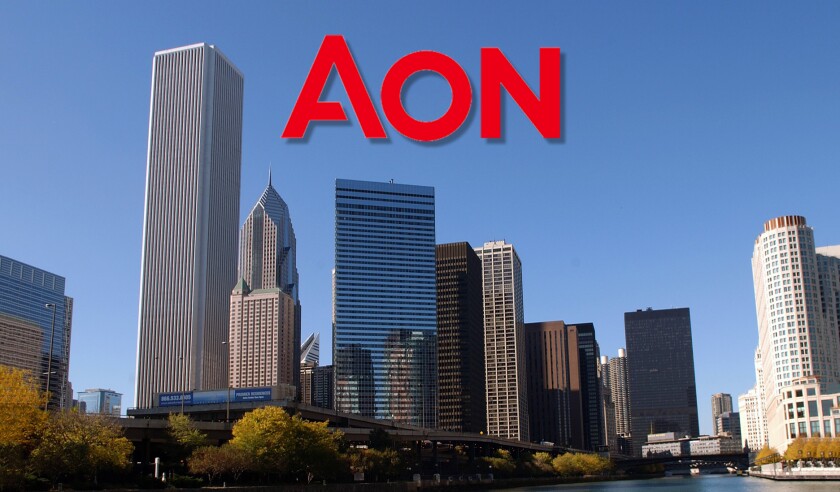This publication revealed in the spring that Aon became more active in considering scaled acquisitions in Q4 last year. (For background see: “Aon: The moment for dealmaking”)
However, sources said that in recent weeks Aon’s activity has intensified, with the firm meeting with a range of possible takeover targets.
It is understood that Aon has engaged with AssuredPartners as part of the latter’s strategic process, which Inside P&C first revealed on September 7. An IPO is also believed to be under consideration for AssuredPartners, as owners GTCR and Apax look to maximize their exit options.
Sources have suggested that Aon has also met with Galway, owner of Epic and Jencap, and MDP-backed NFP, as it searches for a transaction.
Banking sources believe Aon could pull the trigger on a deal as soon as this quarter, or early next year.
Potential targets
Aon is expected to choose a platform with substantial scale. Galway – the smallest of the three - is likely to be sold off adjusted Ebitda in the $400mn-$500mn range, potentially pointing to a $7bn-$8bn enterprise value transaction.
NFP and AssuredPartners are substantially bigger. NFP reported $536mn of Ebitda to Moody’s on a 12-month trailing basis to 30 September last year, suggesting that it is probably on course for ballpark $700mn of adjusted Ebitda this year.
AssuredPartners is being marketed to potential acquirers at around $800mn-$900mn of adjusted Ebitda, pointing to a likely valuation in excess of $12bn, and potentially closer to $15bn.
Sources have also pointed to Truist Insurance as a possible target, with Aon understood to have made a preliminary approach for the firm earlier in the year at the time of its process only to be rebuffed. Truist subsequently sold a 20% stake in the insurance business to Stone Point.
With Truist Insurance’s parent bank likely to need additional capital in the coming years, it is on a path to a sell down of its stake. However, the revenue dis-synergies resulting from retail/wholesale channel conflict between Aon and Truist’s wholesaler CRC render a deal with Aon a long shot. Marsh is understood to be CRC’s largest client, and could be expected to pull all of its business Day 1.
Benefits and drawbacks
All of the different potential deals offer Aon advantages and disadvantages.
Galway offers Aon both a mid-market retail capability, a top-10 wholesaler, an MGA platform in Paragon, and the biggest opportunity to drive margin creation. However, it has a significant amount of leadership that would look to retire, has a heavier weighting to the upper mid-market, and has not built the M&A machine of some other firms.
Aon would have to either pre-empt or come out on top in a sale process for AssuredPartners, which could create upward pressure on valuation and lower execution certainty. The firm has not grown strongly organically and is perceived to have further to go on integration. In addition, founder Jim Henderson is expected to retire in relatively short order post-deal, with succession now in place in the form of CEO Randy Larsen and president Paul Vredenburg.
The firm has an MGA operation which is likely to be attractive, but lacks wholesale broking.
NFP, meanwhile, is a more integrated business that has a well-oiled M&A machine, and also would bring a recently united MGA platform. However, some believe that the firm’s culture could be more challenging to integrate into Aon. In addition, it has a higher weighting to benefits and wealth than peers – and it is not clear that this is Aon’s focus. In addition, the market is also watching for the possibility of a management transition at some point with Doug Hammond now in the top job for a decade.
Truist Insurance, meanwhile offers wholesale and retail at scale, including significant MGA operations, with the business around the $1bn mark in Ebitda. However, revenue breakage in CRC would be huge, and McGriff has been a low growth business that has been quiet on M&A.
As previously argued, the time looks to be right for Aon to pursue a major transaction. This reflects the expectation that market-driven organic growth will fade in the coming quarters. In addition, there are an increasing range of available assets willing to consider strategic sales alongside other financing options given the higher cost of debt’s cooling influence on PE interest. (For background see: “Broker M&A: When private equity’s interest cools”)
There has also been some downward movement in platform valuations since last year’s peak.
Further, after just over two years, enough time has likely passed since the abortive Willis deal to give Greg Case and his management team the freedom to move.
The potential interest of the antitrust regulators in the US remains a potential wildcard that could upset Aon’s efforts to buy into new segments, or new parts of the value chain. Sources perceive a mid-market play as lower risk given that Aon is not active in the segment.
Vertical integration in the value chain through a sizeable wholesale acquisition is seen as more likely to draw adverse interest from the FTC or DOJ.
Capital deployment
Aon’s capital deployment framework has long favoured share buybacks, as it seeks a high cash-on-cash return, with the approach helping drive remarkable share price appreciation in recent years.
If a management team values its stock highly, this is always likely to be perceived as a higher return on capital for cash generated.
However, it is understood that Aon is preparing to flex its capital deployment framework owing to the perceived strategic imperative to enter new markets.
Aon is likely to frame such a move in terms of servicing a broader range of clients, and opening up new markets for growth.
However, it likely also owes something to the reality that size matters in broking.
Aon has allowed itself to be outgrown significantly by Marsh McLennan. In 2012 Aon’s revenue base was 96% the size of Marsh McLennan, and in 2022 it was 60% its size.
As previously argued, short-term this may not matter in terms of serving clients or driving shareholder returns. But in an industry where consolidation has been a huge driver of value and the consolidation game is far from played out, Aon will suffer in the longer term from sitting on the sidelines and buying back stock.
Short-term rational can be long-term irrational.
Aon has headroom to take on roughly $5bn of additional debt to fund M&A without endangering its rating, but would also be able to deploy its free cashflow alongside issuing shares.
Aon declined to comment.



